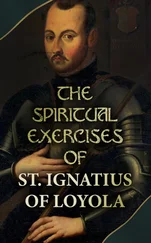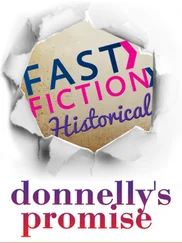Ignatius Donnelly - Antediluvian world
Здесь есть возможность читать онлайн «Ignatius Donnelly - Antediluvian world» весь текст электронной книги совершенно бесплатно (целиком полную версию без сокращений). В некоторых случаях можно слушать аудио, скачать через торрент в формате fb2 и присутствует краткое содержание. Жанр: Старинная литература, на русском языке. Описание произведения, (предисловие) а так же отзывы посетителей доступны на портале библиотеки ЛибКат.
- Название:Antediluvian world
- Автор:
- Жанр:
- Год:неизвестен
- ISBN:нет данных
- Рейтинг книги:5 / 5. Голосов: 1
-
Избранное:Добавить в избранное
- Отзывы:
-
Ваша оценка:
- 100
- 1
- 2
- 3
- 4
- 5
Antediluvian world: краткое содержание, описание и аннотация
Предлагаем к чтению аннотацию, описание, краткое содержание или предисловие (зависит от того, что написал сам автор книги «Antediluvian world»). Если вы не нашли необходимую информацию о книге — напишите в комментариях, мы постараемся отыскать её.
Antediluvian world — читать онлайн бесплатно полную книгу (весь текст) целиком
Ниже представлен текст книги, разбитый по страницам. Система сохранения места последней прочитанной страницы, позволяет с удобством читать онлайн бесплатно книгу «Antediluvian world», без необходимости каждый раз заново искать на чём Вы остановились. Поставьте закладку, и сможете в любой момент перейти на страницу, на которой закончили чтение.
Интервал:
Закладка:
From all these facts it appears that the population of Ireland came from the West, and not from Asia—that it was one of the many waves of population flowing out from the Island of Atlantis-and herein we find the explanation of that problem which has puzzled the Aryan scholars. As Ireland is farther from the Punjab than Persia, Greece, Rome, or Scandinavia, it would follow that the Celtic wave of migration must have been the earliest sent out from the Sanscrit centre; but it is now asserted by Professor Schleicher and others that the Celtic tongue shows that it separated from the Sanscrit original tongue later than the others, and that it is more closely allied to the Latin than any other Aryan tongue. This is entirely inexplicable upon any theory of an Eastern origin of the Indo-European races, but very easily understood if we recognize the Aryan and Celtic migrations as going out about the same time from the Atlantean fountain-head.
There are many points confirmatory of this belief. In the first place, the civilization of the Irish dates back to a vast antiquity. We have seen their annals laying claim to an immigration from the direction of Atlantis prior to the Deluge, with no record that the people of Ireland were subsequently destroyed by the Deluge. From the Formorians, who came before the Deluge, to the Milesians, who came from Spain in the Historic Period, the island was continuously inhabited. This demonstrates (1) that these legends did not come from Christian sources, as the Bible record was understood in the old time to imply a destruction of all who lived before the Flood except Noah and his family; (2) it confirms our view that the Deluge was a local catastrophe, and did not drown the whole human family; (3) that the coming of the Formorians having been before the Deluge, that great cataclysm was of comparatively recent date, to wit, since the settlement of Ireland; and (4) that as the Deluge was a local catastrophe, it must have occurred somewhere not far from Ireland to have come to their knowledge. A rude people could scarcely have heard in that day of a local catastrophe occurring in the heart of Asia.
There are many evidences that the Old World recognized Ireland as possessing a very ancient civilization. In the Sanscrit books it is referred to as Hiranya, the “Island of the Sun,” to wit, of sun-worship; in other words, as pre-eminently the centre of that religion which was shared by all the ancient races of Europe, Asia, Africa, and America. It is believed that Ireland was the “Garden of Phoebus” of the Western mythologists.
The Greeks called Ireland the “Sacred Isle” and “Ogygia.”
“Nor can any one,” says Camden, “conceive why they should call it Ogygia, unless, perhaps, from its antiquity; for the Greeks called nothing Ogygia unless what was extremely ancient.” We have seen that Ogyges was connected by the Greek legends with a first deluge, and that Ogyges was “a quite mythical personage, lost in the night of ages.”
It appears, as another confirmation of the theory of the Atlantis origin of these colonies, that their original religion was sun-worship; this, as was the case in other countries, became subsequently overlaid with idol-worship. In the reign of King Tighernmas the worship of idols was introduced. The priests constituted the Order of Druids. Naturally many analogies have been found to exist between the beliefs and customs of the Druids and the other religions which were drawn from Atlantis. We have seen in the chapter on sun-worship how extensive this form of religion was in the Atlantean days, both in Europe and America.
It would appear probable that the religion of the Druids passed from Ireland to England and France. The metempsychosis or transmigration of souls was one of the articles of their belief long before the time of Pythagoras; it had probably been drawn from the storehouse of Atlantis, whence it passed to the Druids, the Greeks, and the Hindoos. The Druids had a pontifex maximus to whom they yielded entire obedience. Here again we see a practice which extended to the Phoenicians, Egyptians, Hindoos, Peruvians, and Mexicans.
The Druids of Gaul and Britain offered human sacrifices, while it is claimed that the Irish Druids did not. This would appear to have been a corrupt after-growth imposed upon the earlier and purer sacrifice of fruits and flowers known in Atlantis, and due in part to greater cruelty and barbarism in their descendants. Hence we find it practised in degenerate ages on both sides of the Atlantic.
The Irish Druidical rites manifested themselves principally in sun worship. Their chief god was Bel or Baal—the same worshipped by the Phoenicians—the god of the sun. The Irish name for the sun, Grian, is, according to Virgil, one of the names of Apollo—another sun-god, Gryneus. Sun-worship continued in Ireland down to the time of St.
Patrick, and some of its customs exist among the peasantry of that country to this day. We have seen that among the Peruvians, Romans, and other nations, on a certain day all fires were extinguished throughout the kingdom, and a new fire kindled at the chief temple by the sun’s rays, from which the people obtained their fire for the coming year. In Ireland the same practice was found to exist. A piece of land was set apart, where the four provinces met, in the present county of Meath; here, at a palace called Tlachta, the divine fire was kindled. Upon the night of what is now All-Saints-day the Druids assembled at this place to offer sacrifice, and it was established, under heavy penalties, that no fire should be kindled except from this source. On the first of May a convocation of Druids was held in the royal palace of the King of Connaught, and two fires were lit, between which cattle were driven, as a preventive of murrain and other pestilential disorders. This was called Beltinne, or the day of Bel’s fire. And unto this day the Irish call the first day of May “Lha-Beul-tinne,” which signifies “the day of Bel’s fire.” The celebration in Ireland of St. John’s-eve by watch-fires is a relic of the ancient sun-worship of Atlantis. The practice of driving cattle through the fire continued for a longtime, and Kelly mentions in his “Folk-lore” that in Northamptonshire, in England, a calf was sacrificed in one of these fires to “stop the murrain” during the present century. Fires are still lighted in England and Scotland as well as Ireland for superstitious purposes; so that the people of Great Britain, it may be said, are still in some sense in the midst of the ancient sun-worship of Atlantis.
We find among the Irish of to-day many Oriental customs. The game of “jacks,” or throwing up five pebbles and catching them on the back of the hand, was known in Rome. “The Irish keen (caoine), or the lament over the dead, may still be heard in Algeria and Upper Egypt, even as Herodotus heard it chanted by the Libyan women.” The same practice existed among the Egyptians, Etruscans, and Romans. The Irish wakes are identical with the funeral feasts of the Greeks, Etruscans, and Romans.
(Cusack’s “History of Ireland,” p. 141.) The Irish custom of saying “God bless you!” when one sneezes, is a very ancient practice; it was known to the Romans, and referred, it is said, to a plague in the remote past, whose first symptom was sneezing.
We find many points of resemblance between the customs of the Irish and those of the Hindoo. The practice of the creditor fasting at the door-step of his debtor until he is paid, is known to both countries; the kindly “God save you!” is the same as the Eastern “God be gracious to you, my son!” The reverence for the wren in Ireland and Scotland reminds us of the Oriental and Greek respect for that bird. The practice of pilgrimages, fasting, bodily macerations, and devotion to holy wells and particular places, extends from Ireland to India.
Читать дальшеИнтервал:
Закладка:
Похожие книги на «Antediluvian world»
Представляем Вашему вниманию похожие книги на «Antediluvian world» списком для выбора. Мы отобрали схожую по названию и смыслу литературу в надежде предоставить читателям больше вариантов отыскать новые, интересные, ещё непрочитанные произведения.
Обсуждение, отзывы о книге «Antediluvian world» и просто собственные мнения читателей. Оставьте ваши комментарии, напишите, что Вы думаете о произведении, его смысле или главных героях. Укажите что конкретно понравилось, а что нет, и почему Вы так считаете.












